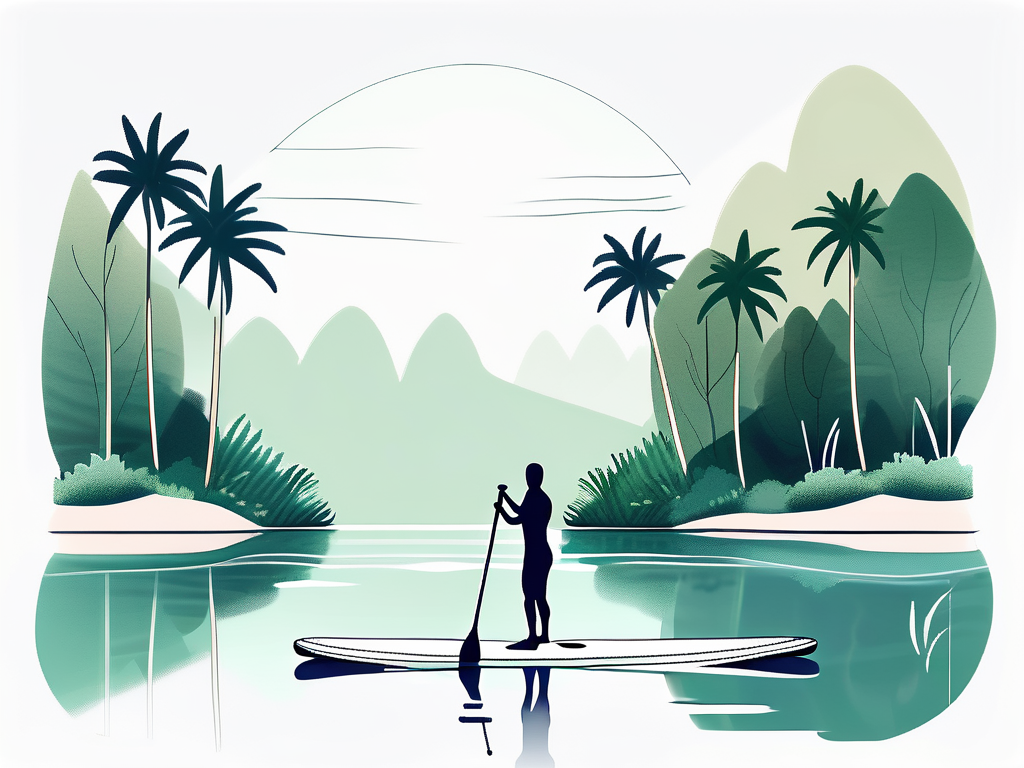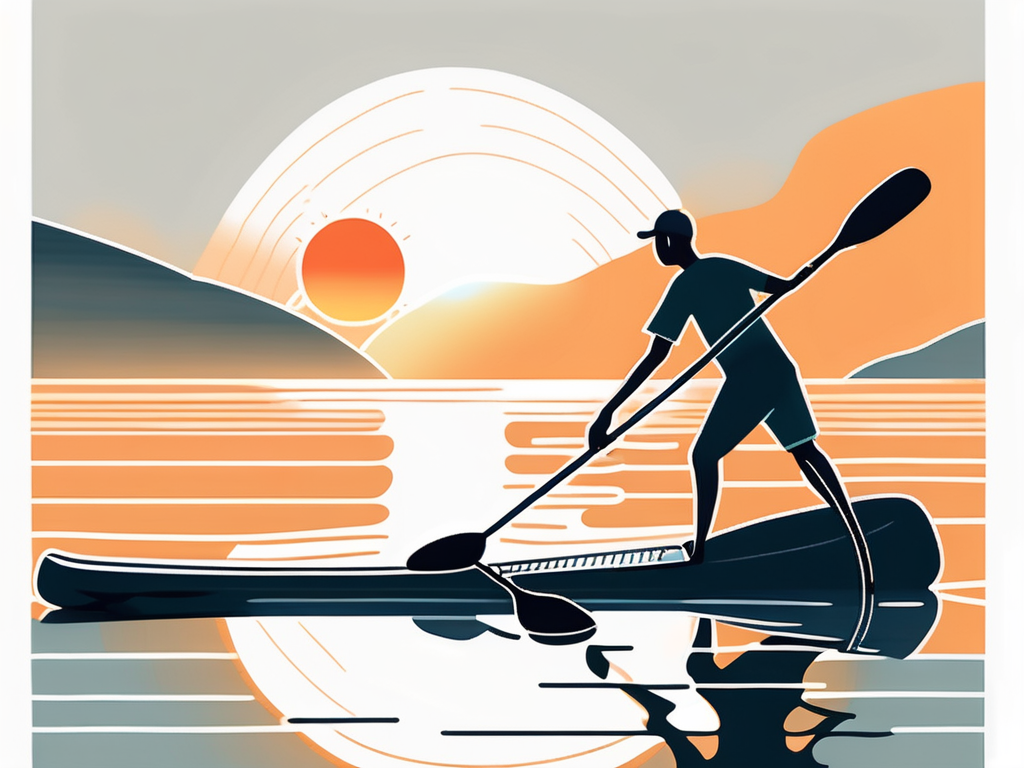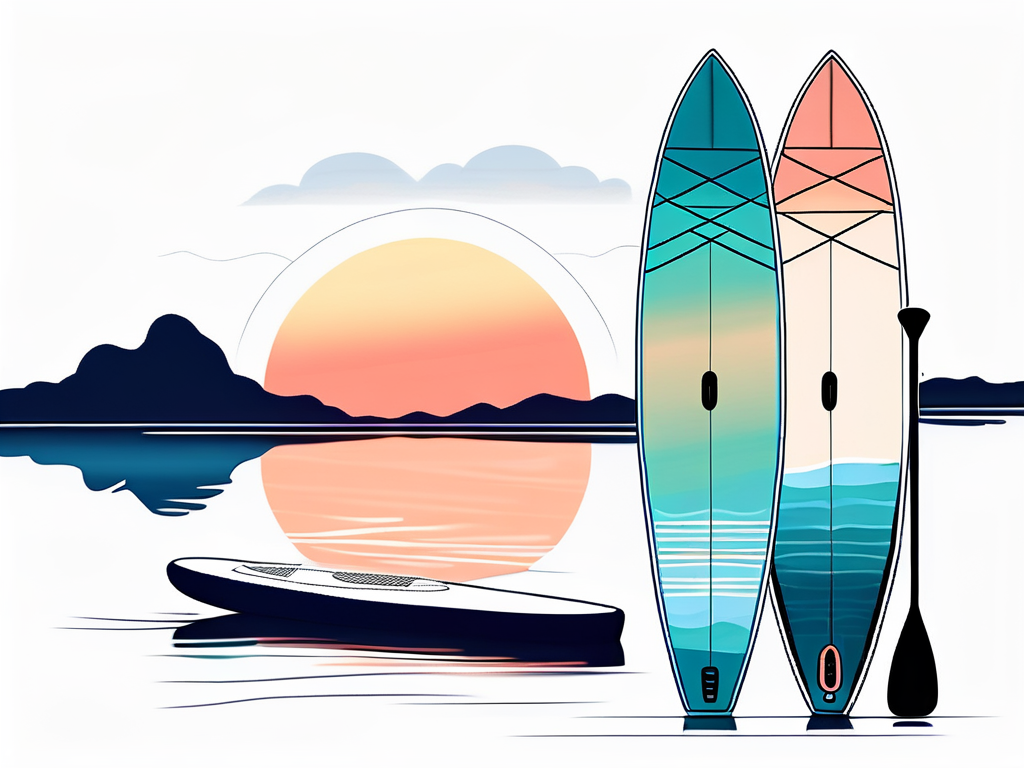Mastering Stand-Up Paddleboarding: Essential Gear Guide
Stand-up paddleboarding (SUP) is a popular water sport that combines elements of surfing and kayaking. Whether you're a beginner looking to try out this exciting activity or an experienced paddler looking to improve your skills, having the right gear is essential for a successful SUP experience.
Essential Gear for Stand-Up Paddleboarding
Must-Have Equipment for a Successful SUP Experience
Before hitting the water, it's important to make sure you have the necessary equipment to ensure a safe and enjoyable paddleboarding experience. Here are some must-have gear:
- A Stand-Up Paddleboard: The most important piece of gear for paddleboarding is, of course, the paddleboard itself. When choosing a paddleboard, consider your weight, skill level, and the type of water you'll be paddling in.
- A Paddle: Your paddle is your primary tool for propelling yourself on the water. Look for a paddle that is lightweight, durable, and adjustable to accommodate your height and paddling style.
- A Personal Flotation Device (PFD): Safety should always be a top priority when paddleboarding. A PFD is essential for staying safe on the water, especially for beginners or when paddling in rough conditions.
- A Leash: A leash is a vital piece of equipment that attaches you to your paddleboard, ensuring that you stay connected to your board even if you fall off. This can be particularly important in strong currents or windy conditions.
- Proper Clothing: When paddleboarding, it's important to wear appropriate clothing for the conditions. Depending on the weather and water temperature, you may need a wetsuit, rash guard, or other protective gear.
Having the right gear is essential to ensure a safe and enjoyable paddleboarding experience. By investing in quality equipment and taking the time to properly prepare, you'll be well on your way to mastering the art of paddleboarding.
Choosing the Right Paddleboard for Your Needs
When it comes to choosing a paddleboard, there are several factors to consider:
- Size and Stability: Paddleboards come in different sizes and shapes, each designed for a specific purpose. Beginners typically benefit from wider, more stable boards, while experienced paddlers may prefer narrower, faster boards.
- Weight Capacity: Consider your weight and the weight of any gear you'll be carrying. Make sure the paddleboard you choose can support your weight without compromising stability.
- Construction Material: Paddleboards are generally made from either foam, plastic, or inflatable materials. Foam and plastic boards tend to be more durable, while inflatable boards are easier to transport and store.
- Intended Use: Think about the type of paddling you'll be doing. Will you be exploring calm lakes and rivers or tackling ocean waves? Different paddleboards are designed for different conditions.
By considering these factors and doing some research, you can choose a paddleboard that best suits your needs and skill level.
Mastering the Art of Standing Up on a SUP
Step-by-Step Guide to Getting Up on a Stand-Up Paddleboard
Now that you have all the necessary gear, it's time to learn how to stand up on your paddleboard:
- Start in calm, shallow water: Find a calm spot with shallow water to practice standing up on your paddleboard.
- Kneel on the board: Begin by kneeling on the board, positioning yourself near the center.
- Get a feel for the board: Take a moment to get a feel for the balance and stability of the board under your knees.
- Slowly stand up: Using your core and leg muscles, slowly stand up from a kneeling position, one foot at a time.
- Maintain a wide stance: Once you're standing, keep your feet shoulder-width apart to maintain stability.
Practicing these steps in a calm and controlled environment will help you build confidence and improve your balance on the paddleboard.
Setting the Stage: Finding the Perfect SUP Spot
Now that you're comfortable standing up on a SUP, it's time to find the perfect spot to paddle. Here are some tips to help you choose the right location:

- Consider your skill level: If you're a beginner, look for calm, flatwater locations such as lakes or slow-moving rivers. Experienced paddlers may enjoy challenging themselves in the ocean or on fast-moving rivers.
- Check local regulations: Some areas may require permits or have specific rules for paddleboarding. Make sure to research and follow any local regulations.
- Look for scenic surroundings: Paddleboarding not only provides a great workout but also allows you to enjoy beautiful surroundings. Look for spots with stunning views or interesting wildlife.
By choosing the right spot to paddle, you'll enhance your overall SUP experience and make the most of your time on the water.
Adjusting Your Paddle: The Key to Comfort and Efficiency
Proper paddle adjustment is crucial for comfort and efficiency while paddleboarding. Here are some tips to get it right:

- Adjust the height: Stand next to your paddleboard with the paddle blade touching the ground. The handle should reach your wrist when you raise your arm above your head.
- Find the right grip: Hold the paddle with a relaxed grip, placing one hand on the top of the handle and the other hand about halfway down the shaft.
- Use your core: Engage your core when paddling to maximize efficiency and minimize strain on your arms and shoulders.
Taking the time to properly adjust your paddle will help you paddle more comfortably and effectively, allowing you to go the distance with ease.
Navigating the Waters: Paddling Techniques for Beginners
How to Properly Hold and Use Your Paddle
Learning the correct paddling technique is essential for efficient and enjoyable paddleboarding. Here's how to properly hold and use your paddle:
- Hold your paddle horizontally with both hands, keeping them shoulder-width apart.
- Extend your arms forward, placing the paddle blade in the water near the front of the board.
- Take a stroke: Use your core and arm muscles to pull the paddle back towards your body, propelling yourself forward.
- Alternate sides: To maintain a straight course, regularly switch sides and paddle on both the left and right to balance your stroke.
By mastering the correct paddling technique, you'll be able to efficiently navigate the waters and enjoy a smooth and controlled ride.
Steering Your SUP Like a Pro
Once you've mastered the basic paddling technique, it's time to learn how to steer your SUP like a pro:
- Back paddle: If you need to quickly slow down or stop, simply reverse the direction of your paddle stroke.
- Sweep stroke: To turn, extend your paddle towards the front of the board on the side you want to turn. Use a sweeping motion to guide the board in the desired direction.
- Rudder stroke: Placing your paddle vertically in the water and using it as a rudder can help you make minor adjustments to your direction.
With these steering techniques in your paddleboarding toolkit, you'll have full control and confidence on the water.
Getting Acquainted with Your Board: Tips for Beginners
Understanding the Dynamics of Your Stand-Up Paddleboard
Before you head out on the water, it's important to understand the dynamics of your paddleboard:
- Buoyancy and stability: Paddleboards are designed to stay afloat and offer stability on the water. Understanding this will help you maintain balance and control.
- Weight distribution: Positioning your weight properly on the board can affect stability and maneuverability. Experiment with shifting your weight forward, backward, and side to side to find the sweet spot.
- Foot placement: Your feet should be positioned symmetrically on the board, with your toes pointed forward. This will help you maintain balance and control.
By familiarizing yourself with the dynamics of your paddleboard, you'll be able to navigate the water with ease and confidence.
Testing Your Balance and Stability on the Water
Developing good balance and stability is key to becoming a proficient paddleboarder. Here are some tips to help you test and improve your balance:
- Practice balancing exercises: Try standing on one leg, shifting your weight from side to side, or even practicing yoga poses on your paddleboard to improve your balance.
- Paddle in different conditions: Challenge yourself by paddling in various water conditions, including calm water, choppy water, and waves. This will help you adapt to different situations and improve your stability.
Building your balance and stability skills will not only make your paddleboarding experience more enjoyable but also increase your overall performance on the water.
The Art of Standing Up: A Step-by-Step Breakdown
Transitioning from Kneeling to Standing on Your SUP
Transitioning from a kneeling position to standing on your SUP can be a bit challenging at first. Here's a step-by-step breakdown to help you master the art of standing up:
- Start in a kneeling position: Begin by kneeling on the paddleboard in a stable, centered position.
- Engage your core: Use your core muscles to stabilize yourself as you prepare to stand up.
- Place one foot in front: Slowly place one foot in a forward position, keeping a wide stance.
- Stand up: Push through your legs, extending them to stand up on the board, ensuring you maintain your balance.
With practice, these steps will become second nature, and you'll be able to smoothly transition from kneeling to standing on your paddleboard.
Finding Your Footing: Tips for a Smooth Stand-Up Process
Here are some tips to help you find your footing and ensure a smooth stand-up process:
- Keep your gaze forward: Look where you want to go, rather than down at your feet. This will help you maintain stability and balance.
- Engage your core: By using your core muscles, you'll be able to maintain stability and control as you stand up on your paddleboard.
- Stay relaxed: Tension can hinder your balance and stability. Relax your muscles and breathe deeply as you transition from kneeling to standing.
By following these tips, you'll be able to find your footing quickly and confidently on your paddleboard.
Conclusion
Mastering stand-up paddleboarding requires a combination of skill, practice, and the right gear. By investing in essential equipment, learning proper techniques, and finding the perfect SUP spot, you'll be well on your way to becoming a paddleboarding pro. Remember to prioritize safety, stay aware of your surroundings, and always follow local regulations when paddleboarding. With dedication and enthusiasm, you'll soon be gliding across the water with confidence and grace.








